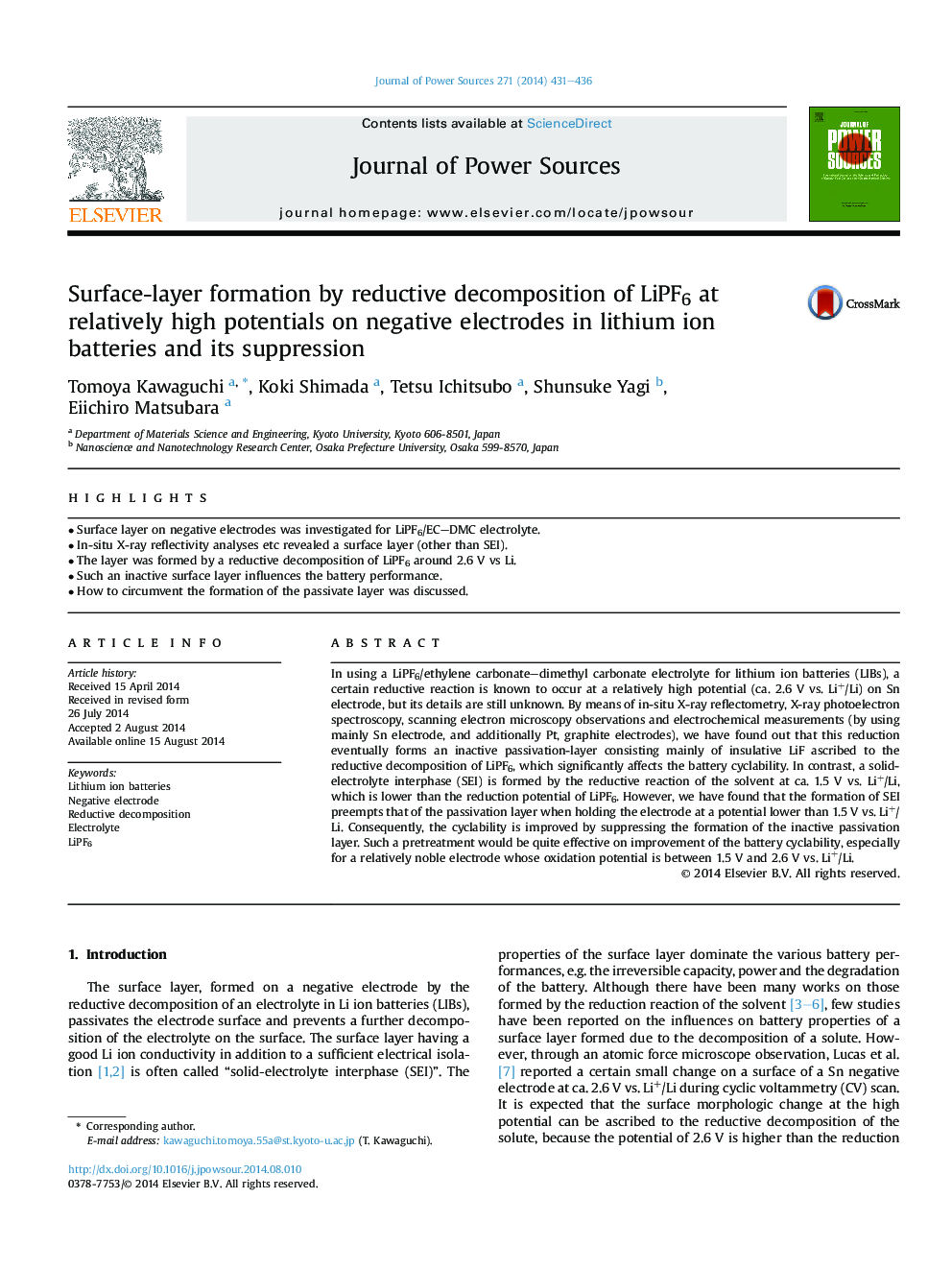| Article ID | Journal | Published Year | Pages | File Type |
|---|---|---|---|---|
| 7735811 | Journal of Power Sources | 2014 | 6 Pages |
Abstract
In using a LiPF6/ethylene carbonate-dimethyl carbonate electrolyte for lithium ion batteries (LIBs), a certain reductive reaction is known to occur at a relatively high potential (ca. 2.6Â V vs. Li+/Li) on Sn electrode, but its details are still unknown. By means of in-situ X-ray reflectometry, X-ray photoelectron spectroscopy, scanning electron microscopy observations and electrochemical measurements (by using mainly Sn electrode, and additionally Pt, graphite electrodes), we have found out that this reduction eventually forms an inactive passivation-layer consisting mainly of insulative LiF ascribed to the reductive decomposition of LiPF6, which significantly affects the battery cyclability. In contrast, a solid-electrolyte interphase (SEI) is formed by the reductive reaction of the solvent at ca. 1.5Â V vs. Li+/Li, which is lower than the reduction potential of LiPF6. However, we have found that the formation of SEI preempts that of the passivation layer when holding the electrode at a potential lower than 1.5Â V vs. Li+/Li. Consequently, the cyclability is improved by suppressing the formation of the inactive passivation layer. Such a pretreatment would be quite effective on improvement of the battery cyclability, especially for a relatively noble electrode whose oxidation potential is between 1.5Â V and 2.6Â V vs. Li+/Li.
Related Topics
Physical Sciences and Engineering
Chemistry
Electrochemistry
Authors
Tomoya Kawaguchi, Koki Shimada, Tetsu Ichitsubo, Shunsuke Yagi, Eiichiro Matsubara,
